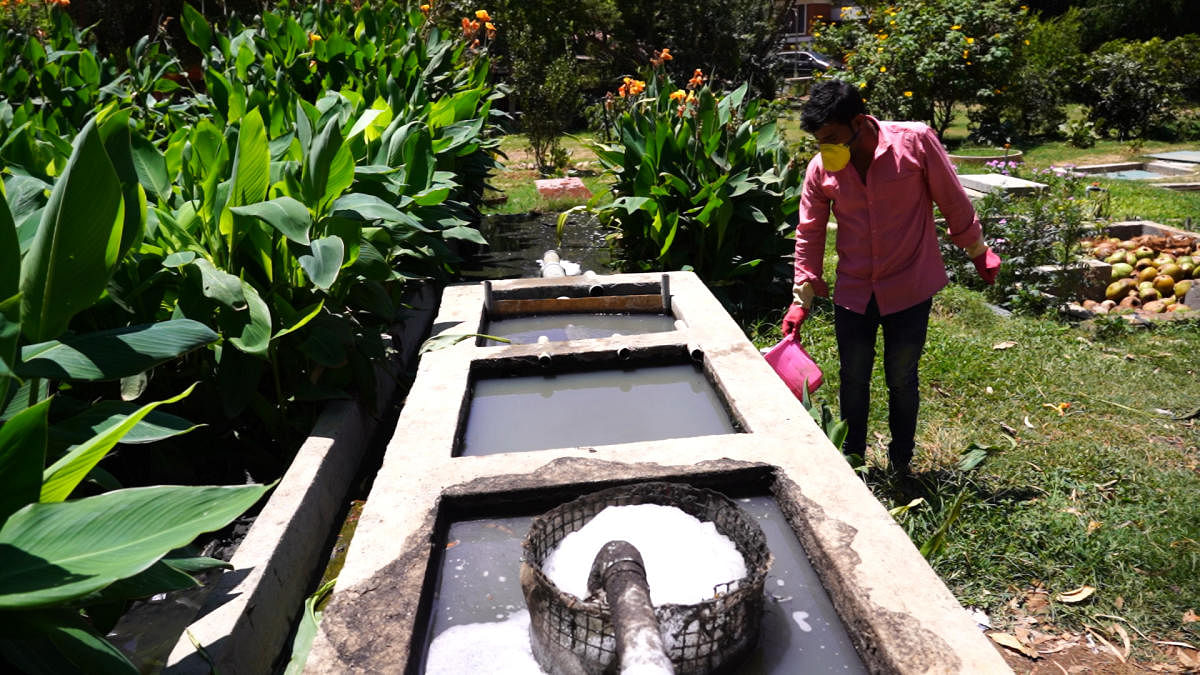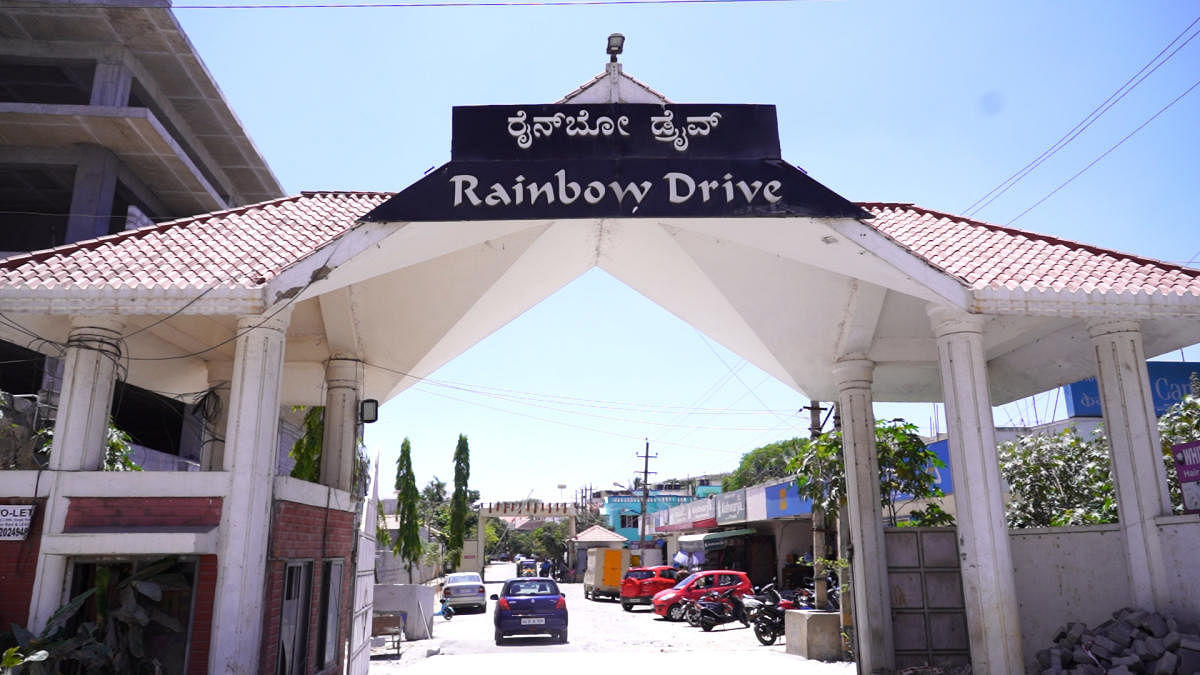
Is water a community resource or a private resource? The question is at the heart of the conversation about water conservation and accessibility in Bengaluru. Conventional wisdom tells us that water is a basic right and its distribution should be equitable; yet the reality is that even in the 'Day Zero' scenario of the city running out of the water, the taps in some houses are going to run dry earlier than others.
The solution to this conundrum might lie in the decade-long experiment in water conservation being carried out at homes in the Rainbow Drive Layout on Sarjapur Road. Starting in 2007, the residents here installed a Rainwater Harvesting System (RWH).
Rainbow Drive (RBD) does not have a government water connection. "A set of RWH initiatives have been carried out here for over 10 years. The colony has 280 recharge wells over 30 acres; it is the highest density of recharge wells of its kind anywhere in the country," says Shubha Ramachandran of Biome Environmental Solutions, which worked closely with the residents in installing the rainwater systems.
Getting all the residents on board also meant a mammoth coordination effort and troubleshooting seemingly petty issues.
"We wanted it to be a collective effort. So if people couldn't pay immediately, we asked them for a post-dated cheque; those without space were allowed to put the system outside their house," says K P Singh, president of the Rainbow Drive Plot Owners Association, one of the members who led the community's water conservation initiative.
Conservation and reuse
Despite these measures, the borewells failed to strike water even at the depth of 1,100 feet. It wasn't that the residents weren't putting enough water into the ground; they were drawing out far too much water.
One of the crucial gaps in the community's conservation of water was the treatment of wastewater. The two existing sewage treatment plants in the colony consumed a lot of energy and required intensive maintenance.
The RBD residents then decided to go in for a 'low-maintenance, low-energy' phytorid STP, based on a design from the National Environmental Engineering Research Institute.
"We realised that if we have to survive, we have to do this," says K P Singh.
The phytorid STP is made of a three-part system: an anaerobic basal reactor (a sort of modified septic tank), a gravel filter and a section where the water is ozonated to remove the chlorine and make it fit for reuse.
There was also a remarkable change in the water consumption levels after a periodic revision of water tariff and slabs for consumption were introduced. Residents are charged nominal prices up to 25 kl of water per month, but beyond that, a 'penalty pricing' of Rs 125 per kl kicks in.
"The freshwater demand per house has dropped considerably. Very few houses in Bengaluru are at 500 litres per day," says Shubha.
The result of these measures is that the water table in the area has risen to 130 feet, with the two borewells ensuring a supply of 1.30 lakh litres of water everyday. Some 80,000 litres of water treated at the STP is used by the community for gardening and other purposes. In practical terms, this has meant that the RBD residents have not required a tanker for several years, even during the height of summer.
"It is an admirable initiative," says Bangalore Water Supply and Sewerage Board Chairman, Tushar Girinath, of the RBD's efforts.
The BWSSB is now encouraging residents to move beyond mere RWH and reuse the water collected. The houses in RBD, who are well ahead of the curve in this regard, could very well be the closest thing to a model community for the city.
